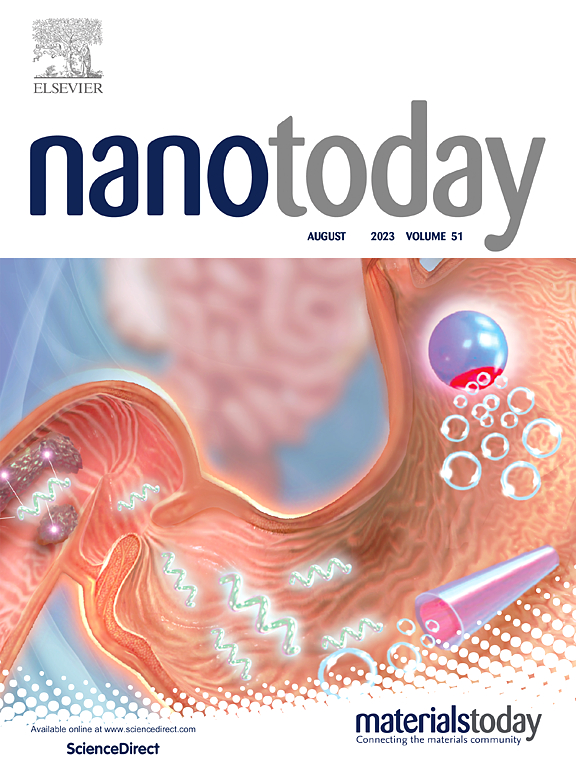Super-resolution fluorescence microscopy and cryogenic soft X-ray tomography enable intracellular localization of stable nanoparticles
IF 13.2
1区 材料科学
Q1 CHEMISTRY, MULTIDISCIPLINARY
引用次数: 0
Abstract
Cubosomes have emerged as a powerful platform for cancer treatment due to their biocompatibility and ability to encapsulate hydrophilic/lipophilic drugs, providing controlled drug release. While investigating these nanoparticles' stability and intracellular localization is essential for advancing them as clinically efficient nanomedicine, such studies are still lacking, and those available do not provide a reliable and comprehensive understanding. Here, we analyze cubosomes stability in complex media and conduct a pioneering study on visualizing their intracellular localization using a combination of correlative high-resolution three-dimensional fluorescence microscopy and soft X-ray tomography (synchrotron-based technique) at cryogenic temperatures, leveraging natural cellular contrast. Our studies revealed that cubosomes were stable in complex media, confirming their localization within lysosomes. In addition to being crucial for ensuring the advancement of cubosomes for therapeutic purposes, this study paves the way for defining the intracellular localization of other nanoparticles in greater detail, utilizing synchrotron-based 3D imaging techniques. Finally, we confirm the efficacy of doxorubicin-incorporated cubosomes against breast cancer cells.
求助全文
约1分钟内获得全文
求助全文
来源期刊

Nano Today
工程技术-材料科学:综合
CiteScore
21.50
自引率
3.40%
发文量
305
审稿时长
40 days
期刊介绍:
Nano Today is a journal dedicated to publishing influential and innovative work in the field of nanoscience and technology. It covers a wide range of subject areas including biomaterials, materials chemistry, materials science, chemistry, bioengineering, biochemistry, genetics and molecular biology, engineering, and nanotechnology. The journal considers articles that inform readers about the latest research, breakthroughs, and topical issues in these fields. It provides comprehensive coverage through a mixture of peer-reviewed articles, research news, and information on key developments. Nano Today is abstracted and indexed in Science Citation Index, Ei Compendex, Embase, Scopus, and INSPEC.
 求助内容:
求助内容: 应助结果提醒方式:
应助结果提醒方式:


